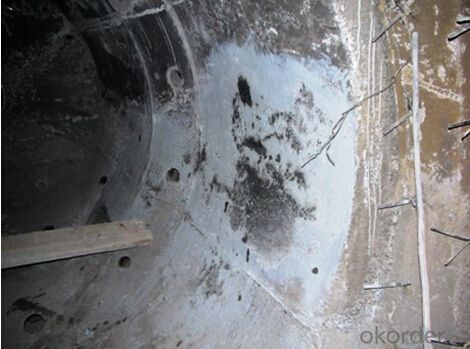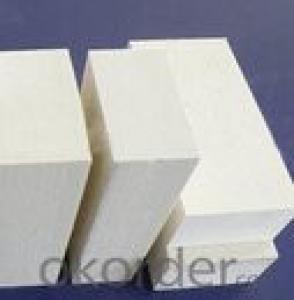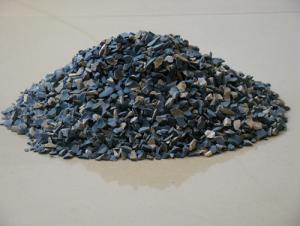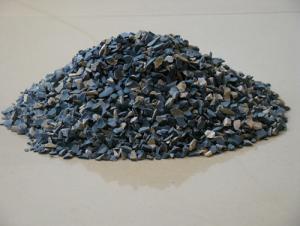High Quality Refractory Firebrick For Sale
- Loading Port:
- China Main Port
- Payment Terms:
- TT OR LC
- Min Order Qty:
- -
- Supply Capability:
- -
OKorder Service Pledge
OKorder Financial Service
You Might Also Like
Specifications
refractory firebrick
1.Resisting high temperature
2.Great bulk density
3.Low iron content
4.SIO9001;2008
Refractory firebricks the main raw material for aluminum silicate fiber cotton, using vacuum
forming production process, operation and add silica sol, aluminum phosphate inorganic binder,
its role is to ensure that the products of the high temperature strength.
Item | High Quality Refractory Firebrick for Sale |
Type | Silica alumina refractory brick Alkaline series Carbon brick Containing zirconium refractory brick Heat insulation refractory brick |
Size and Specifications | NA RNA NK NKI |
Characteristics | Density huge , Strength high Refractoriness under load high Thermal shock resistance best Good eroding resistance Resisting high temperature |
Typical Application
| 1.Building material industry,kiln,heating equipment and the inwall of high—temperature pipe line 2.Chemical industrial high temperature of reaction equipment inwall 3.Power plant ,gas turbine engine and heat insulation of unclear power 4.The fire proof of high—rise building 5.Furnace door of kiln 6.High-temperature filter material |
Operating Temperature | 600°C, 950°C |
Service | the specifications of refractory brick could be customized |
MOQ | 1 ton |
Port | Qingdao Port |
Payment Terms | L/C, D/A, D/P, T/T, Western Union, MoneyGram, Cash |
Packing | wooden pallets with water-proof cover, and tightened with plastic/steel bandages |
Delivery | Within 15 Days |
Certificate | CE, ISO 9001 |
Items | Index | ||||||||
N-1 | N-2a | N-2b | N-3a | N-3b | N-4 | N-5 | N-6 | ||
Refractoriness, °C ≥ | 1750 | 1730 | 1730 | 1710 | 1710 | 1690 | 1670 | 1580 | |
Refractoriness Under Load,°C, [0.2MPa×0.6%] ≥ | 1400 | 1350 | -- | 1320 | -- | 1300 | -- | -- | |
Linear Change on Rehearting,% | 1400°C×2h | +0.1 -0.4 | +0.1 -0.5 | +0.2 -0.5 | -- | -- | -- | -- | -- |
1350°C×2h | -- | -- | -- | +0.2 -0.5 | +0.2 -0.5 | +0.2 -0.5 | +0.2 -0.5 | -- | |
Apparent Porosity, % ≤ | 22 | 26 | 24 | 24 | 26 | 24 | 26 | 28 | |
30.0 | 20.0 | 25.0 | 20.0 | 15.0 | 20.0 | 15.0 | 15 | ||
firebrick
Packing
wooden pallets with water-proof cover, and tightened with plastic/steel bandages
By your request also
Shipping
We will shipping and delivery goods timely ,quanlity and quantity guaranteed , and also in accordance
with the contract and customer's requirment completely !
FACTORY:


- Q:what needs to be noted when choosing and using blast furnace fireproof materials?
- it depends on the size of the blast furnace. below 200 cubic meters alumina bricks and carbon brickcan be used. 200 cubic meters and above are currently integrated bottom, not the same as the size of the cubic level, varying in the use of refactory. I hope my answers above are helpful to you and your ideal anwers.
- Q:What are the differences between intensive refractory busway and other busways?
- Compact busway is named after its structure, especially referring to busway which is closely laminated between phases and between phase and shell and use thin insulating material to achieve the insulation result. Fire-resistant busway is named after its uses, just as its name implies, for higher fire safety requirements need busway of higher fire resistance level. The structural style of fire-resistant busway can be intensive and of air type, depending on what material it use to resist fire, so there is no direct link between them, but there is a included relationship.
- Q:what is the original materials of fireproof coating?
- Fire retardant coating is composed of the base materials (that is film forming substance), pigments, ordinary coating additives, fire retardant agent and dispersion medium.
- Q:what's the detailed address of fireproof and thermal inuslation matertial market?
- Detailed address of fire insulation materials market is as follows: A: Guangzhou Huatai building materials co., LTD. Address: Guangzhou Tianhe Chepo Road no. 10 B: Address of Donglong building materials market: Guangzhou Tianhe Taian North Road no. 7 C: Address of Huiya building materials trade market : Guangzhou Tianhe Sports West Road No. 109
- Q:What are the physical properties of refractory material?
- The mechanical properties of refractory material include compressive strength, volume density and sclerosing, slag resistance, elastic modulus, thermal shock resistance, oxidation resistance, bibulous rate, fluidity, resilience, bond strength and slump, electrical conductivity, specific heat, heat capacity, the impact strength, linear change, torsional strength, stomatal aperture distribution, resistance to acid, etc. The use performance of refractory material include refractoriness, thermal emissivity, condensation, porosity, coefficient of thermal expansion. Thermal properties of refractory material include thermal conductivity, temperature conductivity, plasticity, the hydration resistance, creep performance. The physical properties of the refractory materials include structure performance, mechanical properties, shear strength, load softening temperature, CO erosion resistance. The structure properties of the refractory materials include porosity, alkali resistance and sintering. The operating performance of refractory material include consistency, tensile strength, the use performance and operating performance, wear resistance, bending strength, thermal properties.
- Q:What are the characteristics of the carbon composite refractories?
- The features of carbon composite refractories: 1. It is with an aggressive high thermal shock resistance 2. Good resistance to molten steel and slag
- Q:Where is refractory used? Thank you!
- According to its refractoriness, it can be divided into ordinary refractory (1,580℃ to 1,770℃), high class refractory (1,770℃ to 2,000) and super refractory (above 2,000℃); according to chemical property, it can be divided into acid , neutral and alkali refractories, and including refractory used for special occasion. The current definition of refractory do not only depend on whether the refractoriness is above 1,580℃. At present, refractory is widely used as inorganic nonmetallic material of production equipment lining in metallurgy, petrifaction, cement, ceramics, power, etc. Refractory generally has good thermal shock resistance, chemical attack resistance, low thermal conductivity and coefficient of expansion, widely used in chemical, construction material, mechanical manufacturing, and ceramics, accounting for 50% to 60% in the total output. It can resist high-temperature action. Refractory has many varieties. Refractory materials are widely used in metallurgy; chemical properties divided by acidic refractories. In addition, cement, silicates. Refractoriness refers to that when cones sample made from refractory has no load. Currently, refractory refers to that is widely used in metallurgy, including neutral refractory and basic refractory.
- Q:Are there any differences between insulation and refractory materials ?
- I will explain to you in a simple way. Refractory materials can resist more than 1200 degrees, some of which are not insulation materials, such as firebricks, which can directly contact with heat source, has little insulation effect. Ceramic fiber, high silica, etc. are all refractory materials which can insulate. Insulation materials with poor performance usually is lower than 800 degrees, which have large thermal resistance, and low thermal conductivity, high porosity. Thus they reduce the thermal loss. To put it simply, insulation materials store most of the heat and only let a small part of heat lose through the air, thus the heat has been isolated. Glass fiber, rock wool, flexible material for thermal insulation, etc. I hope you can understand it.
- Q:What needs to be paid attention to in the construction of high- temperature refractory mortar?
- 1. During the use of high- temperature refractory mortar, the minimum mortar joint should be 0.5mm and general mortar joint should be 3-5mm, which can solve the processing and fine grinding of refractory brick on the brick grinder. Besides, it is conducive to the health of workers, and can reduce the masonry effort, ensure the quality and speed up the construction progress. 2. When making urgent repair on the stove, if the joint is much too large, 2-3mm refractory pieces can be appropriately added into the high- temperature refractory mortar, and stirred to fill the joint so as to shorten the repair time and ensure normal production. 3. High- temperature refractory mortar can be painted inside various furnace body, and it should be guaranteed that the surface of the furnace body has no dust or debris before painting.
1. Manufacturer Overview |
|
|---|---|
| Location | |
| Year Established | |
| Annual Output Value | |
| Main Markets | |
| Company Certifications | |
2. Manufacturer Certificates |
|
|---|---|
| a) Certification Name | |
| Range | |
| Reference | |
| Validity Period | |
3. Manufacturer Capability |
|
|---|---|
| a)Trade Capacity | |
| Nearest Port | |
| Export Percentage | |
| No.of Employees in Trade Department | |
| Language Spoken: | |
| b)Factory Information | |
| Factory Size: | |
| No. of Production Lines | |
| Contract Manufacturing | |
| Product Price Range | |
Send your message to us
High Quality Refractory Firebrick For Sale
- Loading Port:
- China Main Port
- Payment Terms:
- TT OR LC
- Min Order Qty:
- -
- Supply Capability:
- -
OKorder Service Pledge
OKorder Financial Service
Similar products
New products
Hot products
Related keywords


























